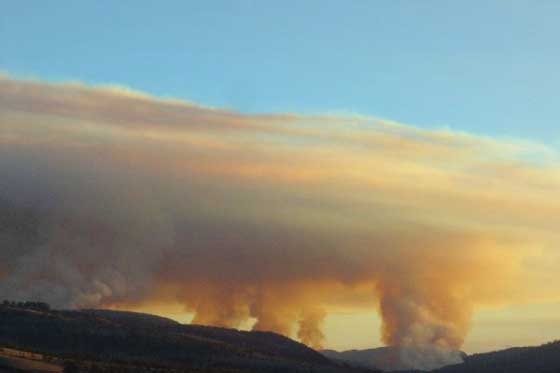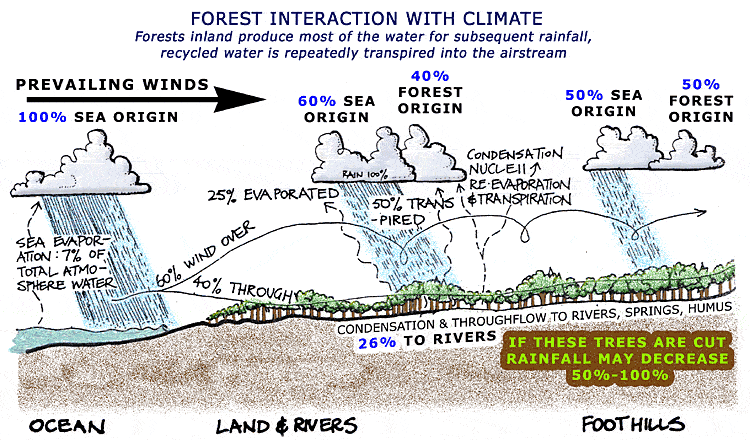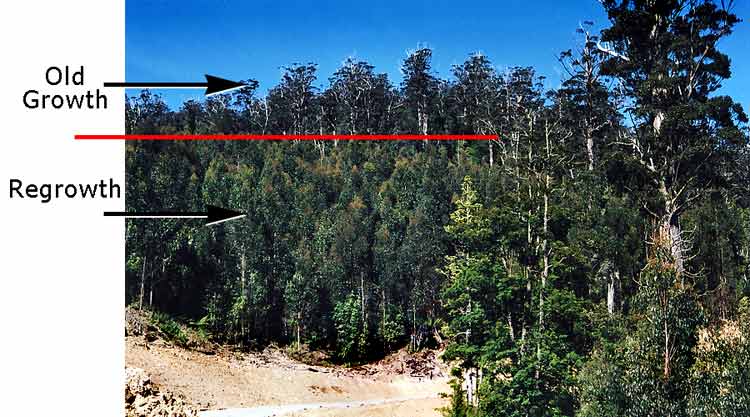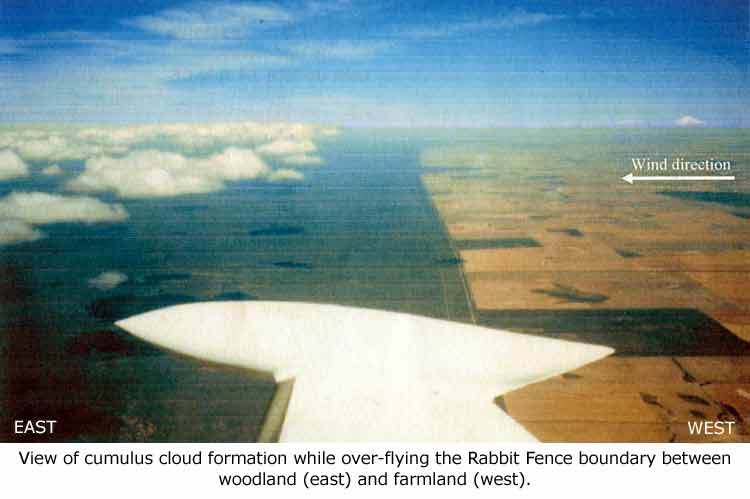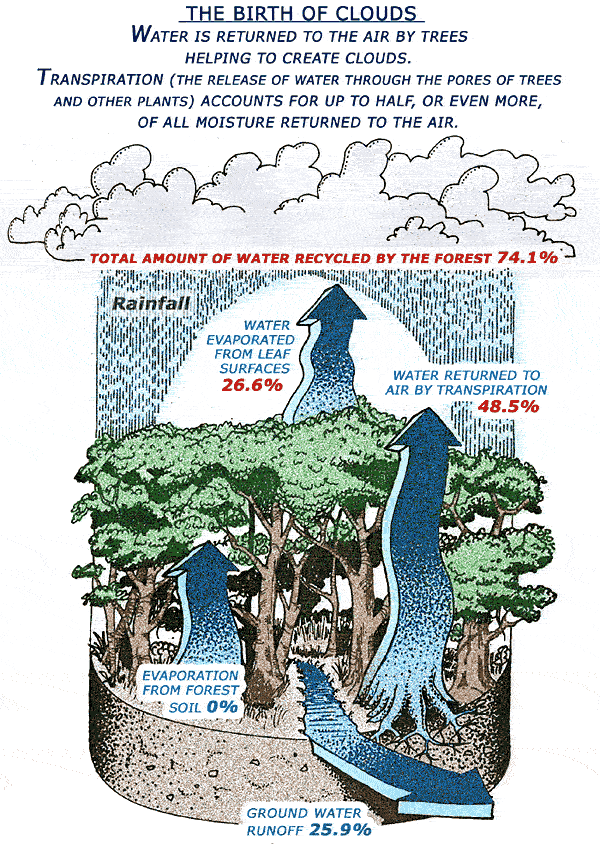|
WATER S.O.S TASMANIA - Climate
|
|
|
|
|
The micro and macro climate around the world
is being altered as deforestation for agriculture and forestry
destroy or change the nature and structure of forests and water
catchments forever.
|
Australian National University
carbon storage going up in smoke is much more than previously thought
THE MELBOURNE AGE 4/8/08 | SYDNEY
MORNING HERALD 5/8/08
|
|
|
|
|
|
Multiple canopies of the different
species within native forests form complex layers of
leaves which have a very large combined surface area
and are integral to a number of functions within those
old forests. These complex layers help to filter the
suns ray’s which in turn helps to keep the under
story moist while at the same time retaining the warmth
of the day. Leaves of the over story eucalypts largely
hang downwards, so any moisture runs off more easily
than the under story leaves which are more splayed out
or horizontal. With their greater surface area and the
associated surface tension, moisture retention within
those forests is maximized. Around day-break when the
right conditions exist and the atmosphere above old
forests is at it’s coolest, moist tree top clouds
(which is not fog) often form as the moisture in these
forests together with rising warm air condenses creating
the wet drizzly conditions which form the classic water
cycle of wet forests. The effects of vertical and horizontal
turbulence within and over the uneven canopies of old
forests, are important factors in distributing pollens
and spores into the atmosphere above those forests,
which in turn provide the nuclei for rain drops.
These phenomenon do not occur where mono-culture re-growth
or plantations have replaced complex undisturbed native
forests.
|
|
|
|
|
|
The phenomenon also has become less frequent
or non existent as ever shrinking and more isolated areas of
old forest are subjected to drying out as the edge effects caused
by extensive de-forestation has substantially altered the structure
of the vegetation and overall landscape. The remaining undisturbed
native forest is not extensive enough to support a reliable
and relatively stable water cycles and micro-climate. Changing
the nature and structure of forests impacts dramatically on
the micro-climate. The effects of land clearing on the climate
has been vividly outlined by research carried out in Western
Australia in the early 90’s.
|
|
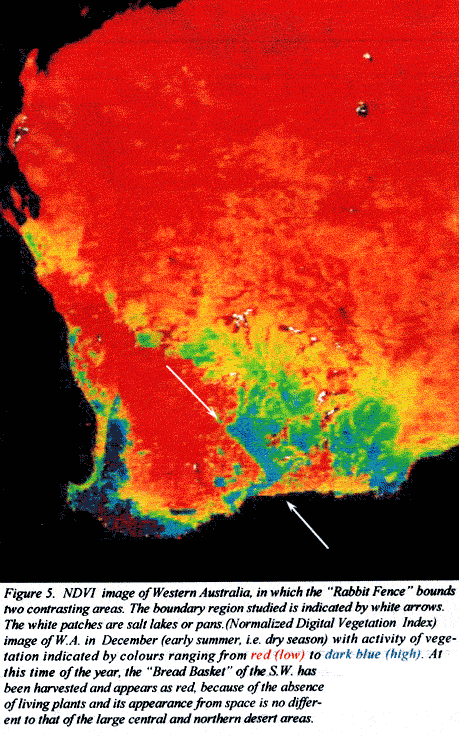 |
|
“Contrasting
land use practices on either side of the Rabbit Fence
are clearly visible from space”.
“Local suspicions of rainfall
changes are supported by measurements of albedos and
atmospheric convection and lifting condensation levels.
Regional rainfall changes observed over half a century
correlate with land clearance activities”.
|
|
|
|
Map of S.W. Western Australia, showing
the “Rabbit Fence” and climate data.
|
|
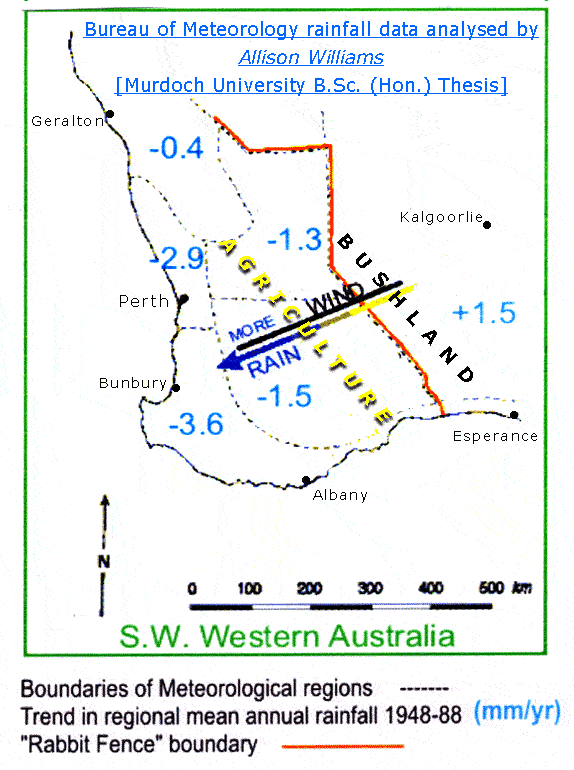 |
|
|
|
|
This picture clearly illustrates the difference
in atmospheric moisture between the cleared farmland and native
vegetation.
|
|
Ref: Peter Schwerdtfeger Emeritus
Professor of Meteorology, Flinders University S.A., RABBITS
AND CLIMATE
Ref: Plantation Effect.
|
|
|
|
|
